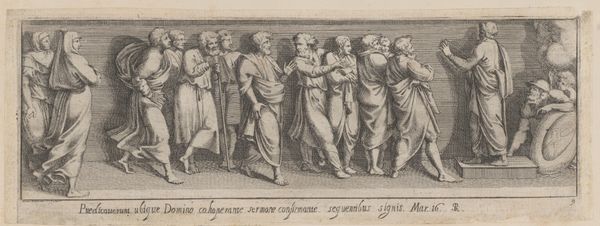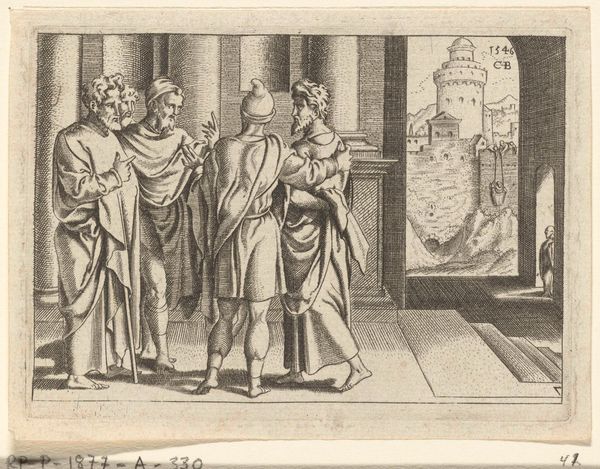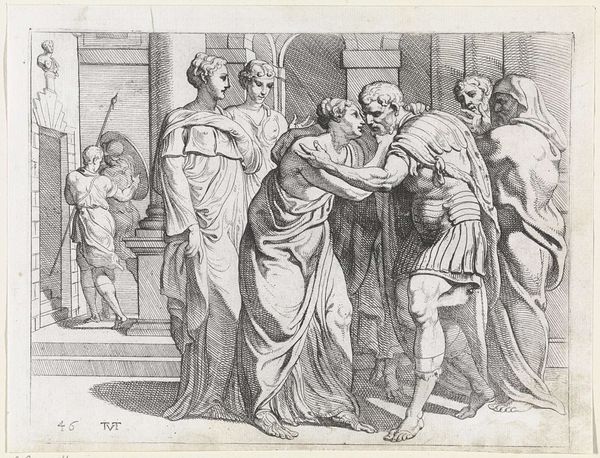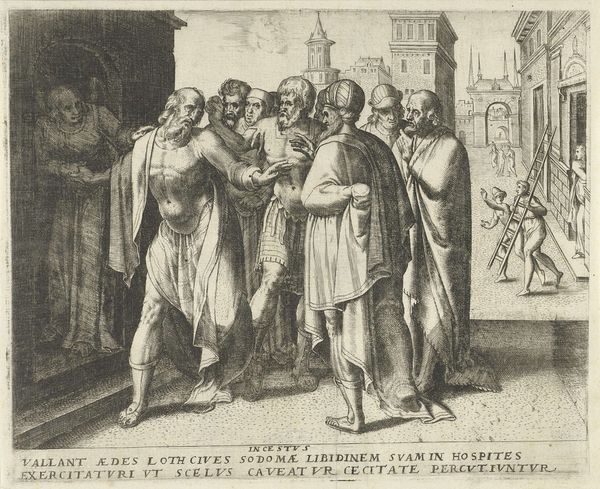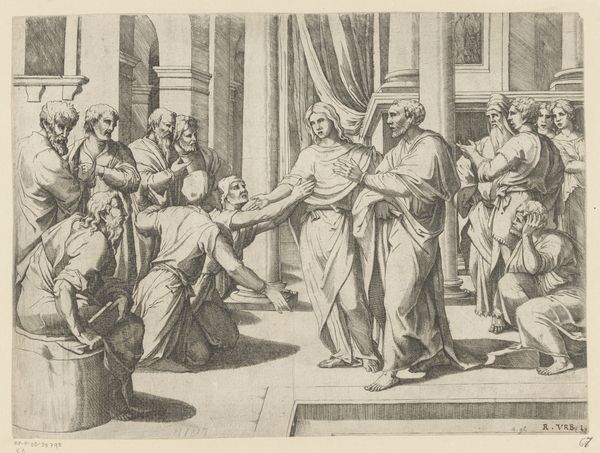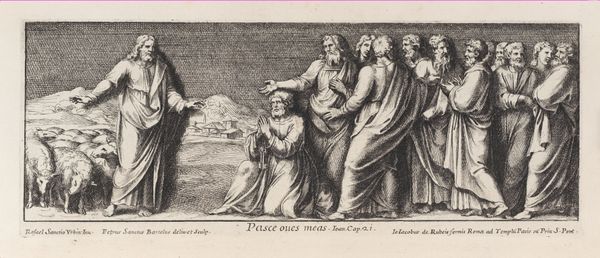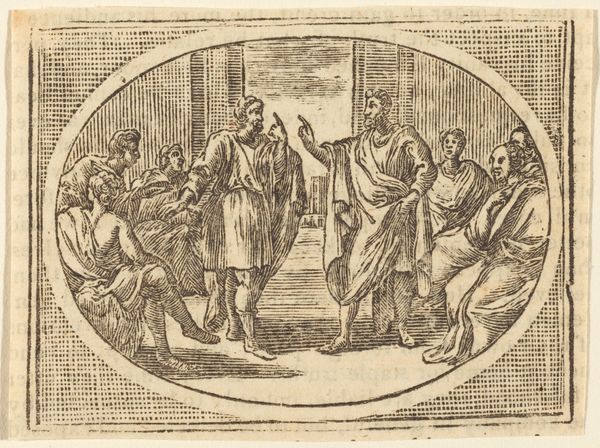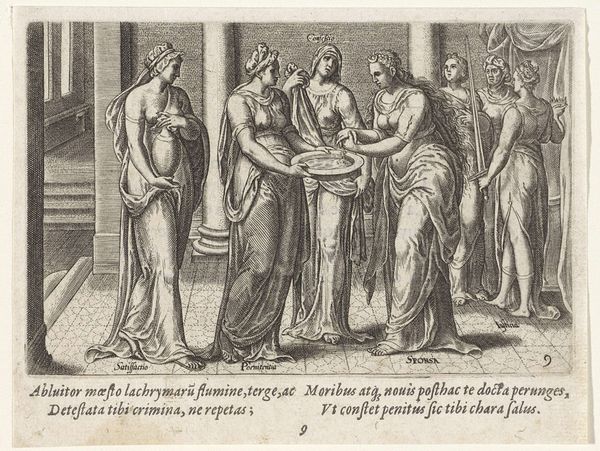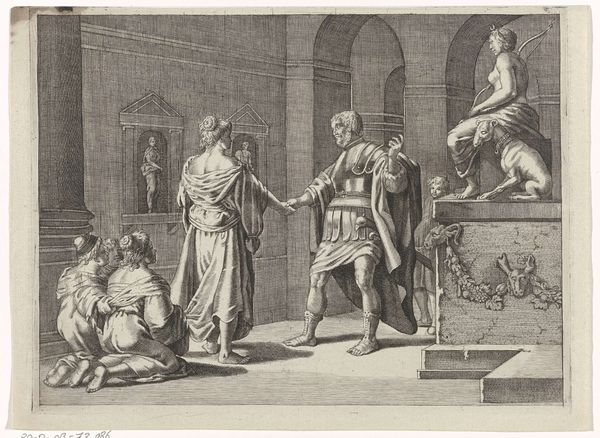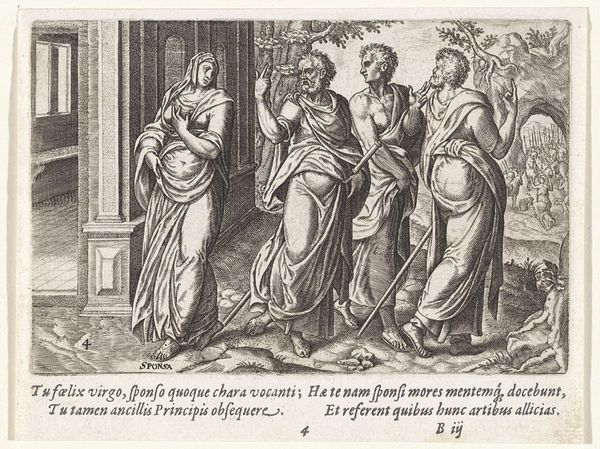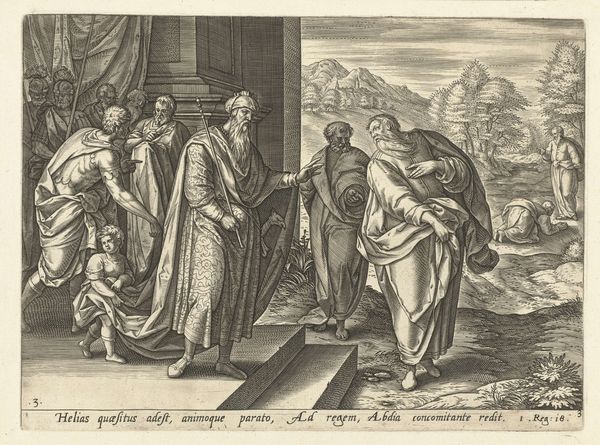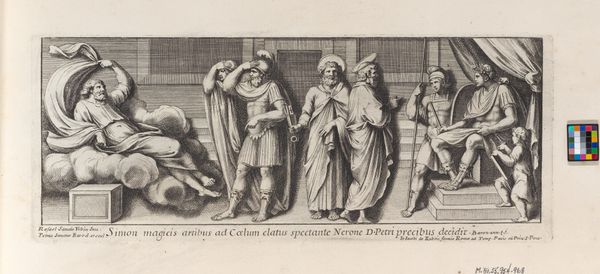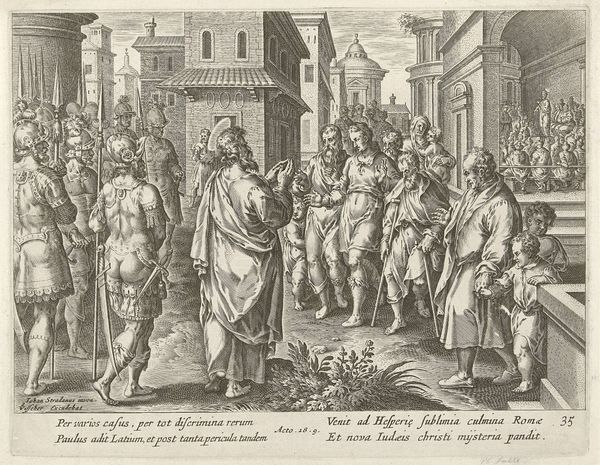
Saint Paul standing before the Proconsul, from a series of 15 plates, depicting Raphael's works for the Vatican stanze and the Sistine Chapel tapestries 1650 - 1670
0:00
0:00
drawing, print, engraving
#
drawing
#
baroque
# print
#
history-painting
#
engraving
Dimensions: Sheet: 4 9/16 × 11 5/16 in. (11.6 × 28.8 cm) Plate: 3 15/16 × 10 3/8 in. (10 × 26.4 cm)
Copyright: Public Domain
Curator: This print by Pietro Santi Bartoli, created between 1650 and 1670, depicts "Saint Paul Standing Before the Proconsul." It is one of fifteen plates after Raphael's work for the Vatican Stanze and the Sistine Chapel tapestries. Editor: It feels incredibly staged, almost like a theatrical production frozen mid-act. The rigid poses and formal attire contrast sharply with what must have been a very emotionally charged moment in Paul’s life. Curator: Indeed. Bartoli meticulously captures the scene with remarkable clarity, employing the engraving technique to showcase Raphael’s original design, but beyond the narrative, consider the arrangement. We have Saint Paul gesturing with authority, challenging the Proconsul. What emotional symbolism can we derive from it? Editor: For me, it's about power and resistance. Saint Paul represents a counter-narrative to the Roman Empire, an early form of challenging authority. The clothing, while classical, suggests distinct social and ideological positioning, challenging the norms of gender, class, and religion in ancient Rome. Curator: Exactly. The proconsul and his court, shrouded in classical drapery, signify the establishment while Paul, despite his captive status, exudes conviction. That upright book he carries is a symbol of this early struggle of a radical faith against the hegemonic norms. Editor: This tension between religious and political power feels perpetually relevant. We still grapple with these struggles when religious dogma meets state power. And here we see an almost romantic vision of resistance against state persecution of the new religion. Curator: Indeed, and there's also the notion of the spread of knowledge. These engravings ensured that Raphael's vision—itself an interpretation—would become widely disseminated and continue to inspire new readings. Editor: Yes, that accessibility through print democratizes the message, removing it from the exclusive domain of the Vatican and making it available for wider consumption and analysis, and in so doing challenges the norms of social order then and now. Curator: Precisely, allowing us to contemplate its echoes across time, right here in the Metropolitan Museum. Editor: A potent reminder that artistic interpretations, when democratized, can themselves become agents of societal shift.
Comments
No comments
Be the first to comment and join the conversation on the ultimate creative platform.
